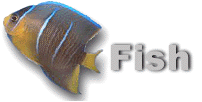
|
|
| Public Forum |
|
|
Click here to make Auspet.com your default home page |

|
 Auspet - Message Boards Auspet - Message Boards
  Fish and Aquarium Fish and Aquarium
  SICK OSCAR SICK OSCAR
|
| next newest topic | next oldest topic |
| Author | Topic: SICK OSCAR |
|
markcs257 New Member  Posts: 1 |
 
MY OSCAR HAS NOT BEEN EATING FOR TWO WEEKS AND SEEMS TO HAVE TUMORS AROUND HIS EYES.I HAVE SEPERATED HIM FROM THE OTHER FISH,CAN I SAVE HIM,PLEASE HELP! IP: Logged |
|
imikec Member  Posts: 11 |
 
Tumours vary, it could be tuberculosis, or what's called pop-eyed etc. Please read the entire literature I have provided for you although long in detail. I have provided a website link for you to click on at the very buttom, where I pulled the info. POPEYE **A condition that causes the eyes of the fish to bulge abnormally from the fish's socket. Can be caused from eye injuries, abcesses or tumors, bacterial diseases and over-aerated water. If left untreated, the eye may bulge out so far from it's socket that it causes the eye to pop out, resulting in the loss of the eye. SYMPTOMS: **One or both eyes protrude from the sockets. Lack of appetite. TREATMENT: **First, eliminate the possibility of over-aeration. If you have been using high powered power heads that shoot streams of bubbles into the water, your fish may be a victim of nitogen supersaturation. The tiny air bubbles enter the fish's blood stream and can accumulate behind the fish's eye, causing it to protrude. **The treatment for nitrogen supersaturation is to turn the power head water stream adjustment to it's lowest setting. Temporarily shut the air off to the power heads, and allow the air pump to be the only source of air. Observe the popeye, if nitrogen supersaturation was the problem, then the eye should receed back into the socket. If no improvement is noticed or worsens, then assume a bacterial infection has occured. Follow treatment recommended for BACTERIAL INFECTION. TUBERCULOSIS **Mycrobacteria that attack various internal organs of the fish. Since tuberculosis has symptoms like other major diseases, it cannot be positively diagnosed without post mortem. Care should be taken when dealing with a tuberculosis infected fish, since there is a slight chance of human infection from the tuberculosis fish. Wear rubber gloves whenever you place your hands in the aquarium or work with potentially infected utensils. SYMPTOMS: **Pale colors, bulging eyes, rapid breathing at surface, sluggish movements, hiding, swelling of the abdomen, no appetite and pinched belly, or wasting away of the fish. TREATMENT: **The best treatment is a broad spectrum gram negative antibiotic such as nitrofuran or kanamycin sulfate. Other packaged medicines include tetracycline, nitrofurazone, or nalidixic acid. Ask your fish dealer to recommend the brand that has been most sucessful. Tuberculosis is a difficult sometimes impossible disease to cure. It may be best to sacrifice the fish for the benefits of it's tankmates. TUMORS **Ocassionally, internal and external tumors become apparent among aquarium fish. Although unpleasant to look at, many tumors are benign and fish seem unaffected by them and can live a normal life. However, others can be cancerous and will continue to grow to enormous sizes, causing distress and death. A viral tumor, known as a LYMPH, will usually rectify itself if left alone. Other tumors, however need specialized attention. SYMPTOMS: **Lumps or growths appear on or beneath the skin of fish. If the growth is underneath the gill covering, it is probably a swollen thyroid. If the lumps are gray raspberry shaped nodules on the fins or skin, see LYMPH above. TREATMENT: **If the tumor is small, does not affect the fish, is not unpleasant to look at and is not growing at a rapid rate, it can be left alone. If the lump is under the gill, it is most likely a swollen thyroid and can be treated with potassium iodide. Add one milligram of potassium iodid to every gallon of water. This treatment period can take up to four weeks. [This message has been edited by imikec (edited 11-11-2003).] IP: Logged |
All times are ET (US) | next newest topic | next oldest topic |
  |
|
Contact Us | Auspet.com

| Home | Contact us | Advertise here | Jobs at Auspet | |
| © 1999-2017 AusPet.com |
